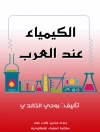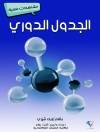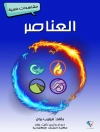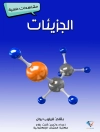Ion channel drug discovery is a rapidly evolving field fuelled by recent, but significant, advances in our understanding of ion channel function combined with enabling technologies such as automated electrophysiology. The resurgent interest in this target class by both pharmaceutical and academic scientists was clearly highlighted by the over-subscribed RSC/BPS ‘Ion Channels as Therapeutic Targets’ symposium in February 2009.
This book builds on the platform created by that meeting, covering themes including advances in screening technology, ion channel structure and modelling and up-to-date case histories of the discovery of modulators of a range of channels, both voltage-gated and non-voltage-gated channels. The editors have built an extensive network of contacts in the field through their first-hand scientific experience, collaborations and conference participation and the organisation of the meeting at Novartis, Horsham, increased the network enabling the editors to draw on the experience of eminent researchers in the field. Interest and investment in ion channel modulation in both industrial and academic settings continues to grow as new therapeutic opportunities are identified and realised for ion channel modulation. This book provides a reference text by covering a combination of recent advances in the field, from technological and medicinal chemistry perspectives, as well as providing an introduction to the new ‘ion channel drug discoverer’. The book has contributions from highly respected academic researchers, industrial researchers at the cutting edge of drug discovery and experts in enabling technology. This combination provides a complete picture of the field of interest to a wide range of readers.
Table of Content
Preface;
Chanelling drug discovery;
Chanome old and new;
High throughput screening;
Automated electrophysiology;
Structure/crystallization/modeling studies;
Toxins – does nature do ion channel drug discovery better than us? Structure and function of Sodium Channels, pharmacophores and binding sites;
AMPA modulators – a case history;
Inhibition of the epithelial sodium channel (ENa C) as a therapeutic approach to respiratory disease;
CFTR channel modulation as a therapeutic approach;
TRPs are a pain: a case history on TRPV1 antagonist development;
The Retigabine story – the M current to therapeutically useful anticonvulsant;
Icrac and Orai – a STIMulating channel;
h ERG past, present and future? Antibodies as ion channel modulators;
Summary and the future;
Index
About the author
Brian Cox is currently the UK Head of Chemistry for Novartis Institutes of Bio Medical Research (NIBR). He has 26 years of experience in drug discovery, working in many therapeutic areas, but particularly in the respiratory and gastrointestinal areas. He is a specialist in the discovery of modulators of ion channels, associated with the development of a number of compounds that have entered evaluation in man. Brian has an extensive publication, presentation and patent record and is a member of the RSC BMCS committee, and he recently co-organised a joint meeting of the BMCS and British Pharmacological Society entitled ‘Ion Channels as Therapeutic Targets’. He is also a Fellow of the Royal Society of Chemistry, is a Chartered Scientist and Chartered Chemist and a Member of the Royal Pharmaceutical Society of Great Britain. Martin Gosling is currently Head of the Ion Channel Unit, Respiratory Diseases Area, Novartis Institutes of Bio Medical Research (NIBR). With a Ph D in ion channel pharmacology, he has 8 years experience in ion channel drug discovery in a pharmaceutical setting. He is also a Tenured Lecturer at Imperial College School of Medicine with research emphasis on ion channel function in vasculature. Martin has an extensive publication record in the ion channel area with numerous invited presentations at international meetings. He has been an organiser/session chair of multiple international ion channel conferences including the recent joint BMCS and British Pharmacological Society ‘Ion Channels as Therapeutic Targets’ symposium.












